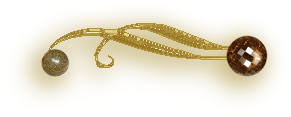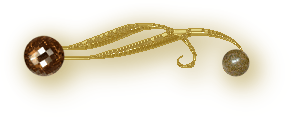
Reparation to the Sacred Heart Fr. Raoul Plus, S. J.  Section III: The Practice of Reparation 4. Afflictive Reparation Effective reparation will incline some souls to inflict suffering upon themselves by means of certain practices of external mortification, in order to unite themselves with the redemptive sufferings of our Lord. This is afflictive reparation. Let me repeat that, like acts of prayer and worship, like ordinary acts of generosity, so also acts of mortification may have another object than reparation. They may be performed to chastise the flesh and bring the body into subjection, or to obtain certain graces; but it is clear that by reason of their very nature they are especially well adapted to the object of reparation. These practices of mortification are divided into two categories, according as they entail or not the use of certain instruments for the purpose, commonly called instruments of discipline. In the first class, for example, are fasting, rising during the night to pray, praying with one's arms extended, sleeping on the hard ground, to say nothing of the many secret penances which Christians may invent, such as not warming oneself when one is cold, not leaning back when one is seated or kneeling. A few important remarks must be made concerning these practices. They are useless apart from the spirit which animates them. It must not be forgotten that it is the intention which gives value to our actions. Moreover, feverish excesses must be avoided; not everything is for everybody. Above all, never undertake anything of this kind without the previous advice and approval of your confessor. [Ephasis added.] This last remark is especially true when it is a question of using instruments of discipline: hair-shirts, chains or disciplines. The hair-shirt is a piece of material made of hemp either in the form of a girdle or of a scapular. The chains are made of light metal links each with a point that touches the flesh, to be worn either on the arm or the leg or round the waist, for an hour or two during the day-never at night. The discipline is a sort of whip, generally consisting of seven little knotted cords, used to scourge the shoulders in memory of the scourging of our blessed Lord. The foolish and frivolous world does not understand these practices, and the words of St. Paul, " I chastise my body and reduce it to subjection," are a mystery to them. When the police were making a search of the belongings of a certain religious, they discovered in a drawer a little packet wrapped in a linen cloth. "What is this?" they asked. They opened it, and to their amazement found in it iron chains and a discipline. "Those," replied the religious, "are means of compensation." The police looked still more amazed. "Yes; you see, there are so many who take life easily that we lead a different sort of life to make up for them." "Still there are a good many there for one, aren't there?" "All right," said the religious, "I don't mind; take what you need for yourselves!" Nor is all this "stuff" for convents and monasteries. Everyone who has read the Introduction to the Devout Life of St. Francis of Sales knows how the gentle Saint recommends the use of these instruments to people living in the world. And if, in view of modern fashions or for reasons of health, chains or hairshirts are not quite convenient (though where there is a will there is a way), at any rate the discipline has not the same disadvantages, and a few blows on the fingers and arms will do no harm to anybody's health. These instruments can be obtained generally from any Carmelite convent, or from any Institution whose object is reparation. In any case the ingenuity of the individual -----which, however, must be always guided by discretion-----may find something which will do just as well. Mgr. de Segur, not being able to obtain the proper instrument, bought a child's whip, which served the purpose admirably. That these practices must be used with great prudence goes without saying. Clearly their object is neither to destroy the health nor to weaken the body, nor to depress the spirit. They are a means, one among many, approved by masters in the spiritual life. If in certain cases they cease to be a means to an end, but become simply irksome, do not hesitate to give up the use of them. The rule to observe is this: Adopt none of these practices without advice; and, on the other hand, do not be capricious in adopting them or in giving them up.  The fact remains, when all is said and done, that the best mortifications are the crosses which God Himself sends us. True virtue is seen in the attitude which is adopted in regard to these. St. Teresa of Avila was about to begin her retreat, and had planned great penances, disciplines and fasts. On the eve of the retreat she fell ill; so it was "good-bye" to her plan of mortification. She was so feverish that she could not meditate. She complained of this to our Lord, Who replied: "You were making your own hair-shirt. Leave it to Me; I will make you one Myself. Receive it from My Divine hand. The Saint understood, and could only bless her Divine Master. Another great devotee of reparation, M ère Dominique-Claire Moes of Luxembourg, whose self-immolation contributed so much to the readmission of the Dominicans into France at the time of Lacordaire, is in agreement with the masters of the spiritual life when she writes: "Mortifications sent by God, if they are accepted with patience and love, are much more meritorious than the practices that we impose upon ourselves. When God does not give the strength to practise mortifications he does not ask them of us." CONCLUSION ONE of the most competent spiritual writers of our time has said: "It is remarkable to see how many holy souls have in recent times been inspired with the idea of reparation, with the desire to offer themselves as victims for the sins of the people. This direction which piety and the mystical life have taken is most significant. God cannot but accept these holocausts which are so evidently inspired by his Spirit." [P. de Tonquedoc; quoted in Bonne Nouvelle, 1918, p. 125.] It is in view of this fact and with this persuasion in mind that we have written these pages, which are really a further explanation and amplification of what we have already written in the work entitled The Ideal of Reparation. [Published by Burns Oates & Washbourne, 1921.] We may sum up as follows: The desire to make reparation is inspired by Love. Love of God, Whose rights we wish to vindicate. Love of the Saviour, Whose sacrifice we lament to see despised. Love of souls; we offer our sacrifice to save and redeem them. Reparation is founded doctrinally upon the dogmas -----properly understood-----of the Redemption and Incorporation in Christ, and upon an exact understanding of Baptism, the Eucharist and devotion to the Sacred Heart. The spirit of Reparation demands or suggests that we should habitually perform the principal exercises of our spiritual life in a spirit of loving compensation.   Contact Us HOME----------HOLY HEARTS DIRECTORY www.catholictradition.org/Two-Hearts/reparation8.htm |